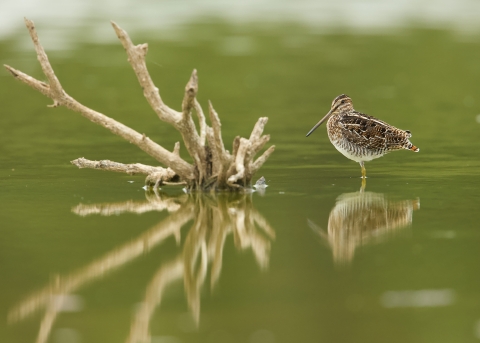What We Do
At the center of the refuge are 24 retired catfish ponds, ranging in size from 12 to 21 acres and totaling 497 acres. These retired catfish ponds are managed to provide cover and food resources for a variety of birds, including waterfowl, wading birds, and shorebirds. To accomplish this, many different structures, water depths, and seasonable water availability are necessary. The refuge biologist carefully plans the management of each unit, deciding when units should be drained and flooded and whether discing or mowing is needed to make the vegetation more favorable for wildlife. Other units may remain flooded throughout the year to provide habitat for breeding wood ducks and other resident wildlife as well as reduce woody plant encroachment into the ponds.
Invasive species can be native or exotic, but both are characterized as aggressively colonizing areas and forming monocultures (plant communities dominated by one species). The negative impacts of invasive species invasive species
An invasive species is any plant or animal that has spread or been introduced into a new area where they are, or could, cause harm to the environment, economy, or human, animal, or plant health. Their unwelcome presence can destroy ecosystems and cost millions of dollars.
Learn more about invasive species are as numerous and diverse as the variety of invasive species themselves. At Coldwater River National Wildlife Refuge, staff not only remove invasive species, they also prevent their introduction and spread. Unfortunately, many invasive species have been established so long and are so wide-spread (like fire ants), that their complete removal is impossible. For those species, selective control is used by targeting areas that are most important for wildlife and habitat management.
Our Projects and Research
Coldwater River NWR provides a valuable setting for research projects involving natural resources management and life history studies of plants and wildlife. Previous studies have focused on waterfowl and moist soil management. For more information on accessing the refuge for official research purposes, contact the refuge biologist at 662-226-8286.
Law Enforcement
Law Enforcement is critical to every aspect of wildlife conservation. The mission of the Law Enforcement program is to support the administration of the National Wildlife Refuge System through management and protection of natural, historical, and cultural resources, property, and people on lands and waters of our National Wildlife Refuges.

